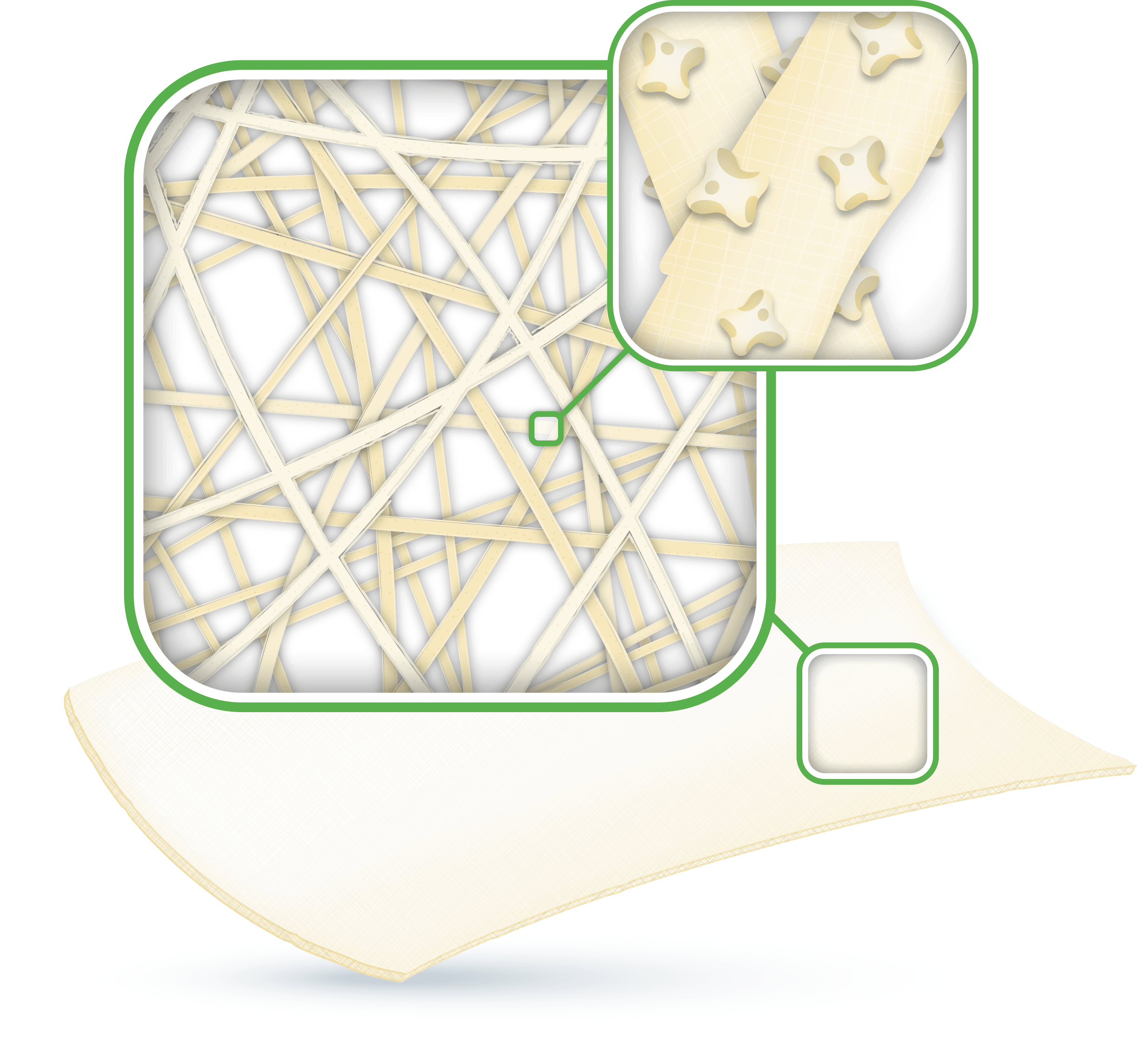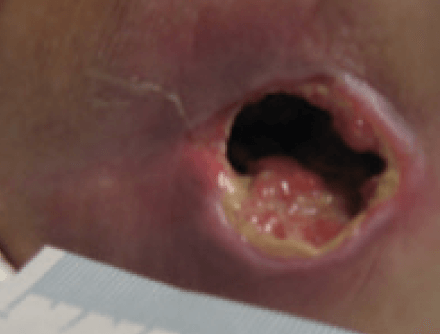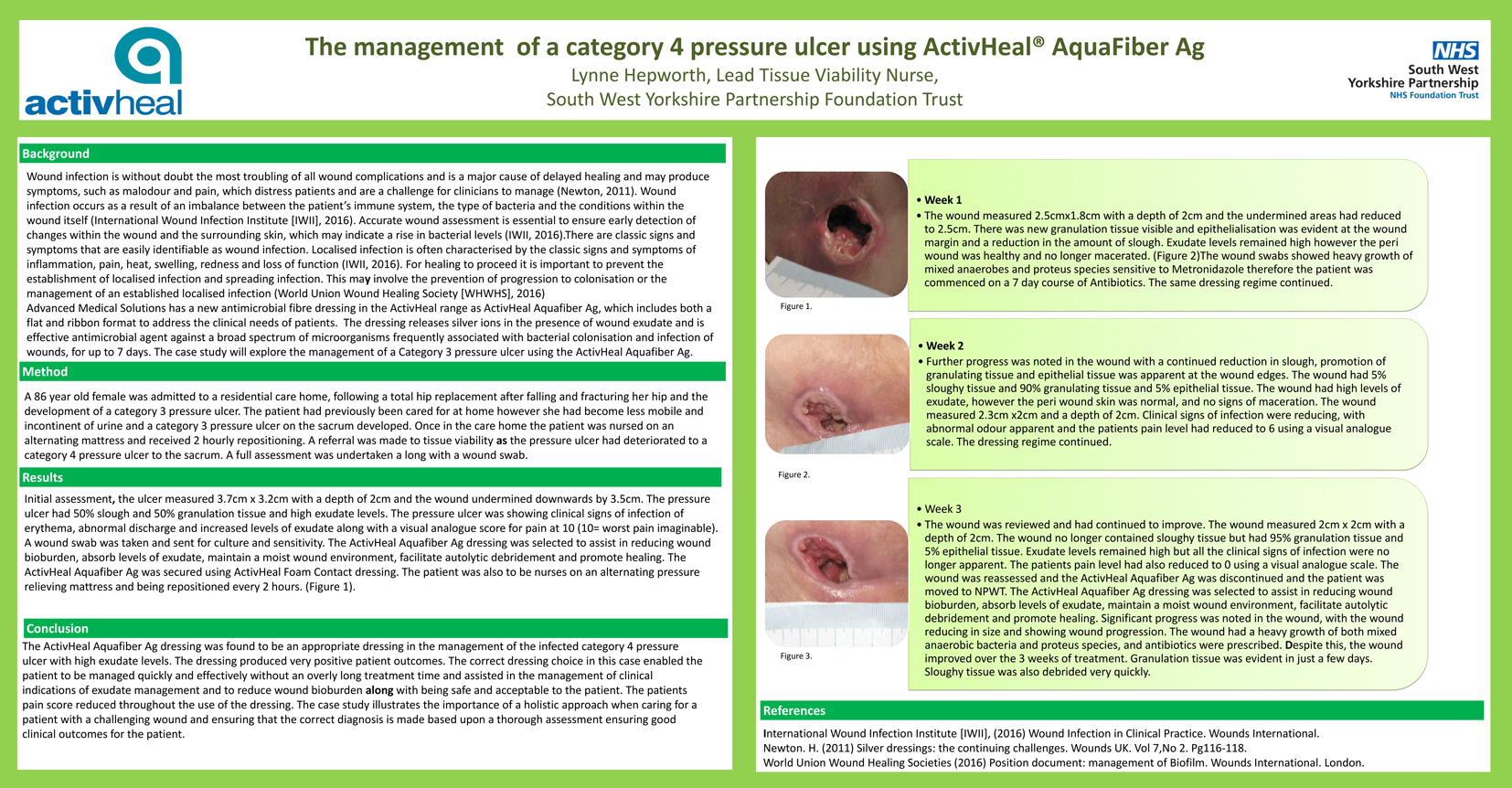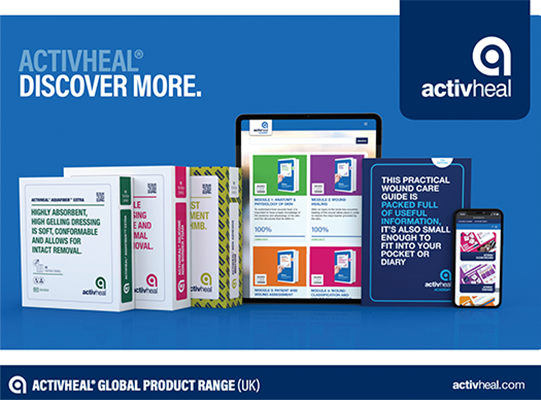Clinical Resource
The management of a category 4 pressure ulcer using ActivHeal AquaFibre Ag
Lynne Hepworth, Lead Tissue Viability Nurse
South West Yorkshire Partnership Foundation Trust
Clinical Resource
The management of a category 4 pressure ulcer using ActivHeal AquaFibre Ag
Lynne Hepworth, Lead Tissue Viability Nurse
South West Yorkshire Partnership Foundation Trust
BACKGROUND
Advanced Medical Solutions has a new antimicrobial fibre dressing in the ActivHeal range called ActivHeal Aquafiber Ag, which includes both a flat and ribbon format to address the clinical needs of patients. The dressing releases silver ions in the presence of wound exudate and is an effective antimicrobial agent against a broad spectrum of microorganisms frequently associated with bacterial colonisation and infection of wounds, for up to 7 days. This case study will explore the management of a Category 4 pressure ulcer using the ActivHeal Aquafiber Ag.

METHOD
RESULTS
Week 1

Week 2

Week 3

CONCLUSION
References
International Wound Infection Institute [IWII], (2016) Wound Infection in Clinical Practice. Wounds International. Newton. H. (2011) Silver dressings: the continuing challenges. Wounds UK. Vol 7, No 2. Pg116-118. World Union Wound Healing Societies (2016) Position document: management of Biofilm. Wounds International. London.
CONTACT US FOR MORE INFORMATION
Discover ActivHeal®
Social Media
Our Product Range
AMS Group
ActivHeal®, its logo and the Advanced Medical Solutions logos are registered trademarks of Advanced Medical Solutions Ltd.
Copyright © Advanced Medical Solutions Limited | Design by Lumisi Ltd


